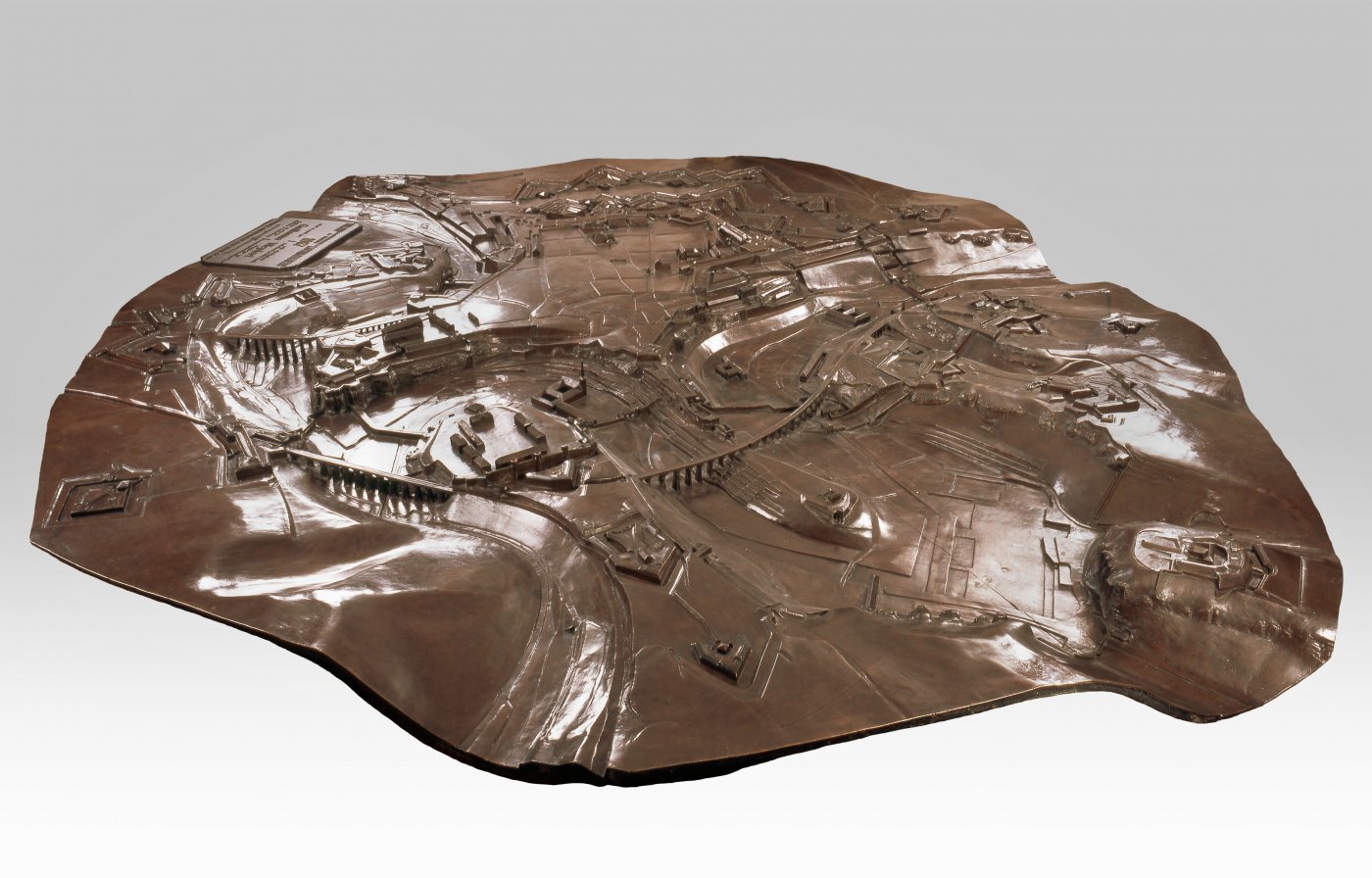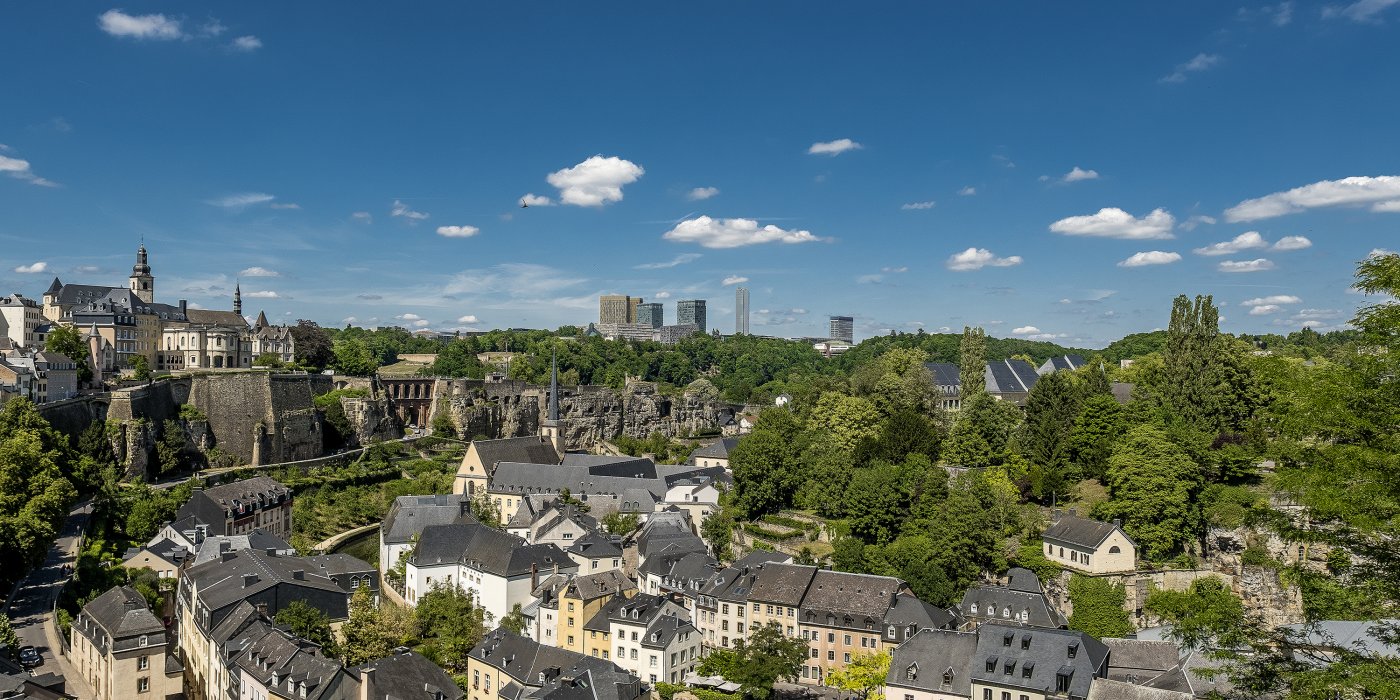Description
The monument to Captain Weydert is the first one you see when you enter the cemetery. Before the site was rearranged, this gravestone had been in the second row. However, the first monument was removed, so the Weydert monument is now the first one visitors see on entering.
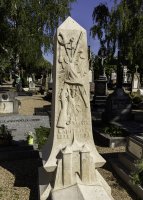
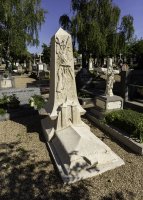
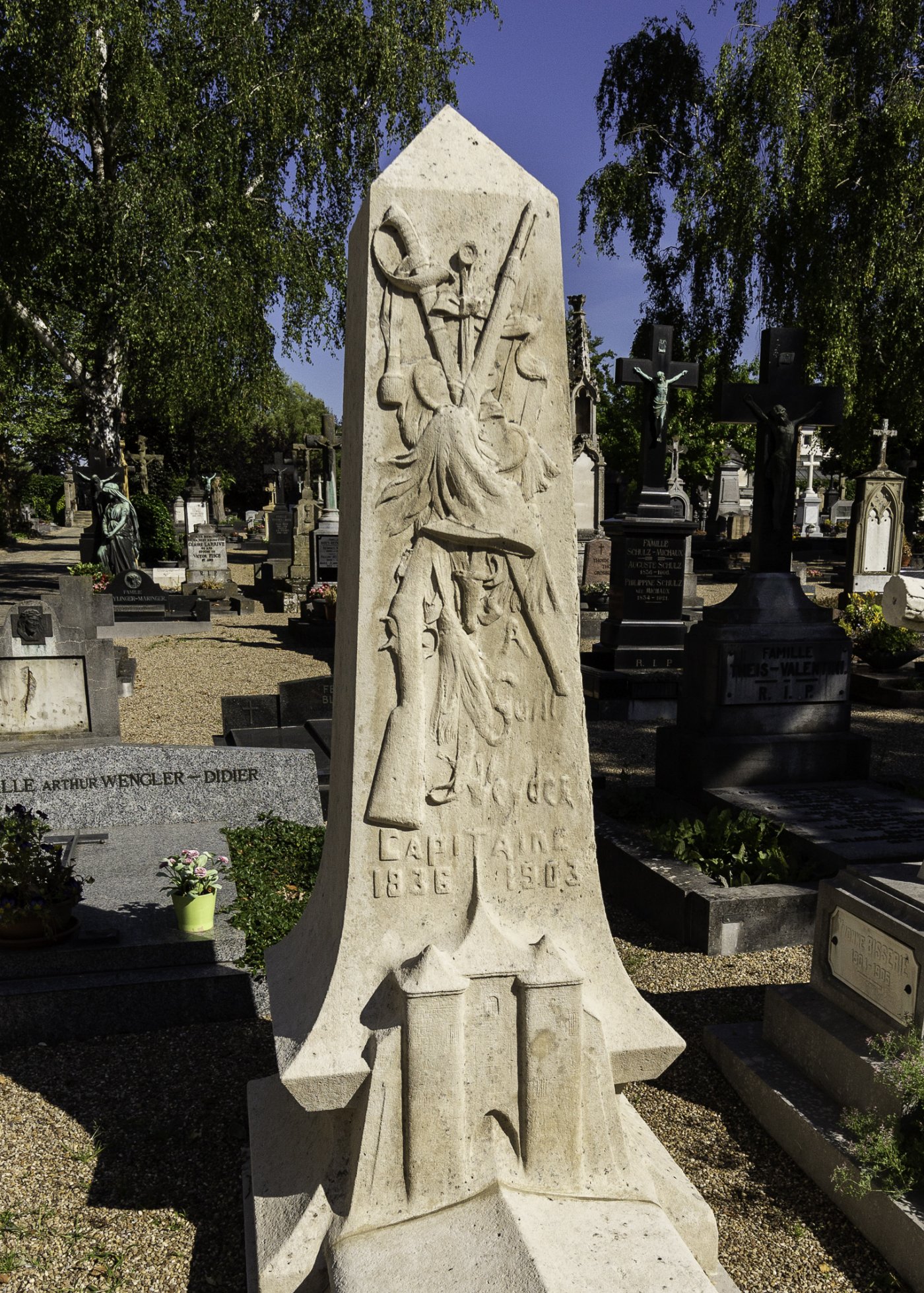
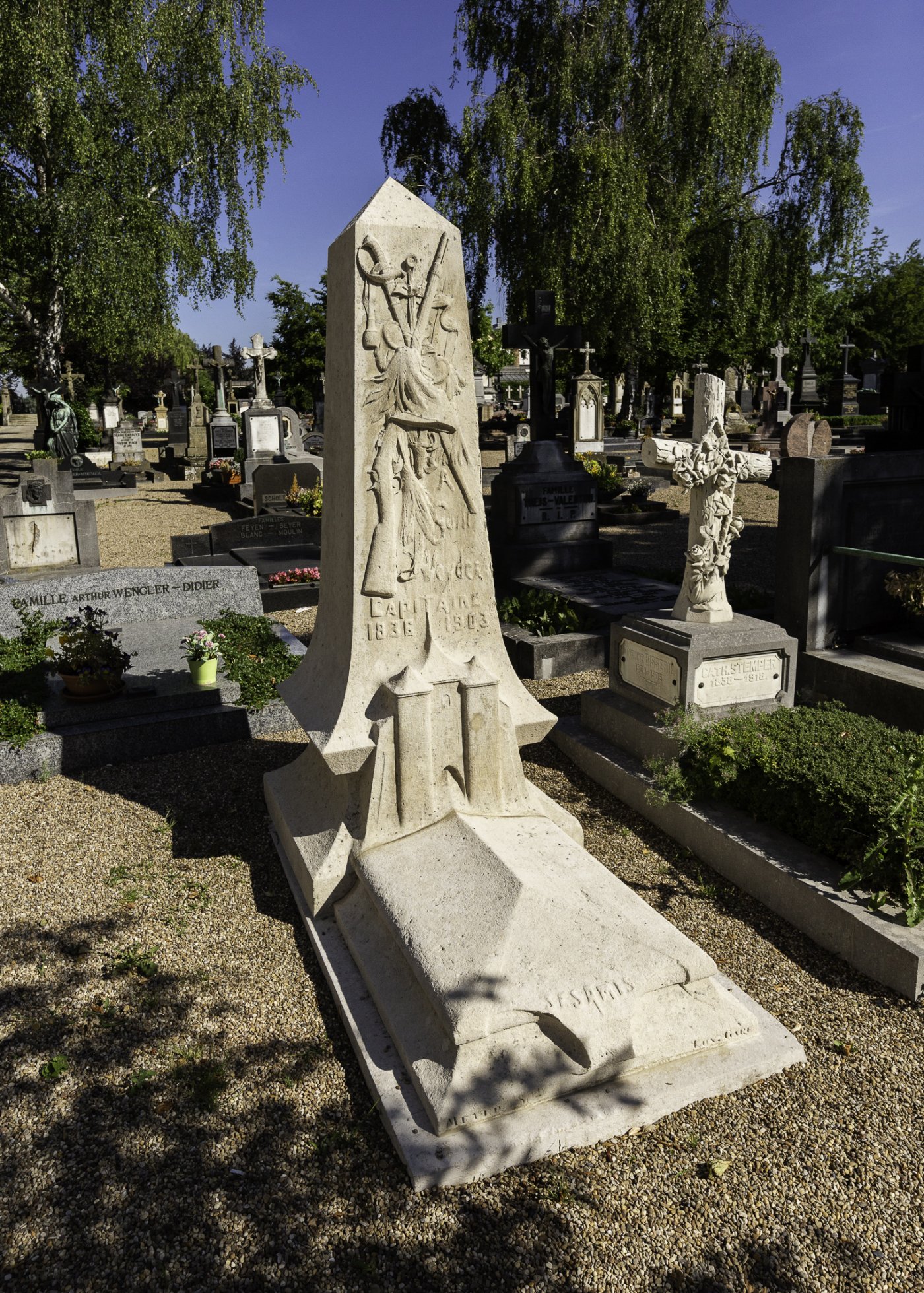
Born on 13 December 1836 into a wealthy family in Zammeschmillen-lès Oberanven, Guillaume Weydert died on 10 January 1903 at the Old Castle of Ansembourg. He enlisted in the Corps des Chasseurs luxembourgeois (Luxembourg light infantry corps) at age 16. In 1883, he was promoted to lieutenant. He later joined the newly created Corps des Gendarmes et Volontaires (police and volunteer corps) and eventually became captain in chief. In 1889, he was appointed deputy advisor to the Military Court. However, he resigned after one year, ostensibly to retire. In fact, he felt he had been passed over for a deserved promotion. He then left Luxembourg City, moving to rented lodgings at the Old Castle of Ansembourg. In Luxembourg City, he had lived in the Three Towers, which are pictured on his burial monument. He died a bachelor and was given a civil funeral at the Ansembourg cemetery. A fundraising drive to erect a monument to him at the cemetery was launched on 21 January 1903. His body was transferred to the Notre-Dame Cemetery on 7 March 1903. On a recommendation from a municipal councillor, Dr Herriges, the City of Luxembourg's municipal council voted on 26 March 1903 to grant ownership of the burial plot in perpetuity, in recognition of his achievements for the City: the creation of a relief of the Fortress of Luxembourg. The effort to erect a monument in his honour was spearheaded by Joseph Junck, a stationmaster, and the "Friends of Captain Weydert". The money was raised through public concerts. The Organising Committee entered into negotiations with a Luxembourg sculptor who won a medal in Paris in 1902. It could, perhaps, have been Jean Mich, who indeed won a medal in Paris during this period. Guillaume Weydert set out to build a scale model of the Fortress of Luxembourg as soon as the garrison departed in September 1867. To gather information on its history and construction, Weydert likely made fact-finding missions to Berlin and Paris. The plaster model was exhibited for the first time in 1883. In 1891, the idea emerged to create an iron mould, and then a bronze one. After much pressure from the Friends of Captain Weydert, the bronze mould was finally completed in April 1903, after the captain's death. After being briefly exhibited, the bronze model created in Geislingen was displayed in the Musée de la Section Historique in Pfaffenthal, and then in the Musée de l'État in Marché-aux-Poissons. Since the 3 Eechelen Museum opened, the model has been on display at the former Thungen fort.
